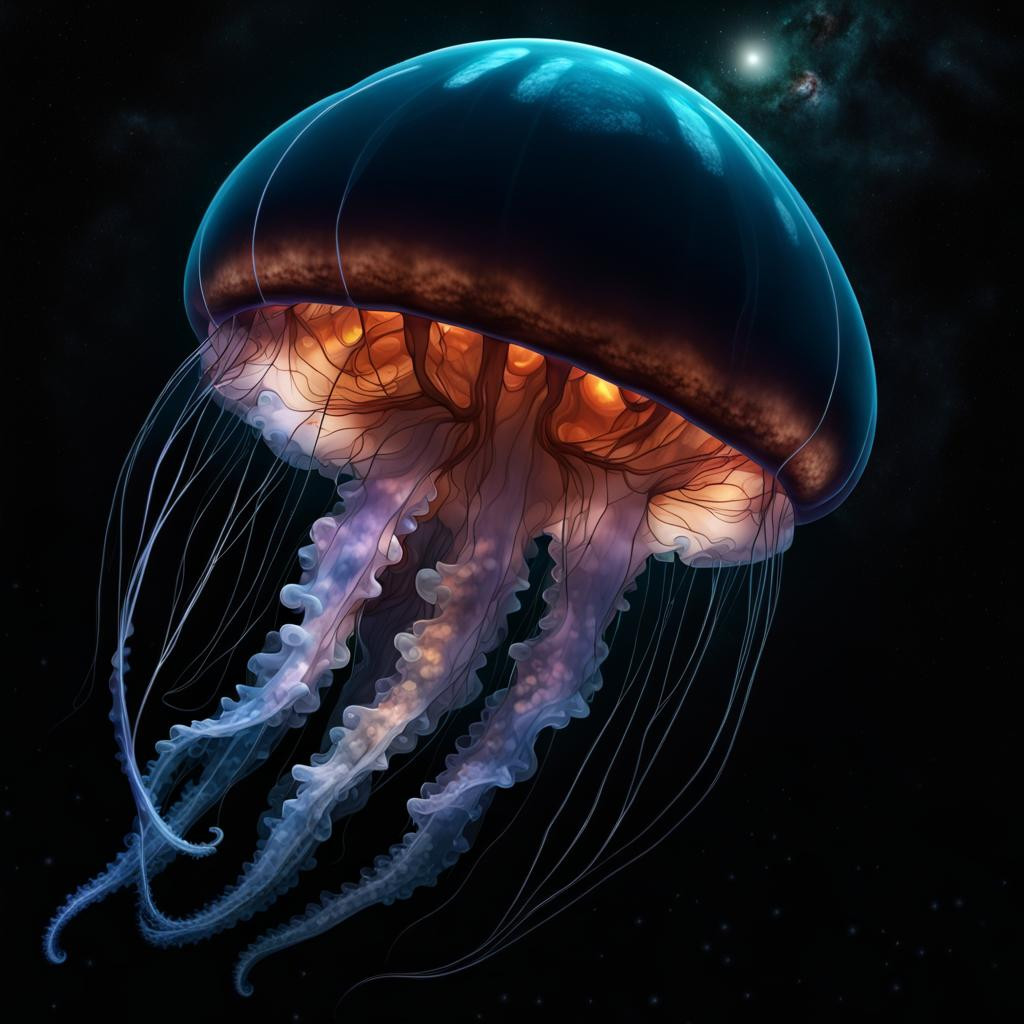HOME | DD
 GratefulReflex — Zaiya Ikowuro: Volume V: The IPF Documents 011
[🤖]
GratefulReflex — Zaiya Ikowuro: Volume V: The IPF Documents 011
[🤖]

#ipf #interstellar_phenomena_files
Published: 2023-10-20 21:25:31 +0000 UTC; Views: 550; Favourites: 5; Downloads: 0
Redirect to original
Description
Encounter ID: 031-05996-AB “Stellar Cnidarian”Threat Level: Yajussari
There were no records in the old empire of encountering these mega-fauna, throughout of people’s history in our home galaxy. The reasons for this might be due to hunting, the native specie’s inability to adapt to the presence of FTL capable vessels or perhaps their preferred prey died out and they followed suit long before we were space faring. It seems that in the collapse and absence of interstellar nations in our galaxy thanks to the Oo’Ol, these creatures have started appearing and due to our encounters with them in the other galaxy, albeit of a differing type and smaller size we know how to interact with these creatures. It has to be said that these Stellar Cnidarians are classified as mega-fauna, as such, the following guidelines are now standard operating procedure. All Navy personnel and all ZSV personnel are authorized to enforce penalties for any individual or vessel that is seen violating these procedures.
It should be mentioned here that the species of Stellar Cnidarian we are encountering appears to be a new species. In general they follow the expected form of a typical Cnidarian of a free-swimming type with a primary ‘bell’ that is roughly navy blue in color. The ‘bell’ may have lighter patches and will have hemispherical light blue lines radiating out from a central point on the top of the ‘bell’ downwards to the bell’s skirt. Numerous filamentous tendrils extend from the glowing tissue that has evolved to drain the energy of whatever these creatures can catch. This means they can drain a ship’s power systems, which is why they are deemed a navigation hazard. The energy-draining tendrils have been found to be upwards of six times longer than the primary body of the animal which is what the 1,000 ILU right of way order is meant to cover. For example on the largest specimen confirmed to exist so far the ‘bell’ was found to be one-hundred and ninety-three ILU tall, with a diameter of five hundred and two ILU wide. This specimen’s paralyzing tendrils reached out at the longest to nine hundred and forty-six ILU.The larger tendrils pictured are used for ensnaring and tearing apart prey. So clearly it is in the best interest of everyone’s safety to give these creatures a lot of room. As a final note in this bulletin, despite the Conspiracy theories on the network, no, the government does not know where these creatures came from.
Remember; even the best safety equipment known will not save you from stupidity, follow the rules and your chances of a bad outcome are slim to none.
*OOC note: The original IPS file for Stellar Cnidarians can still be found in my gallery under IPS-0158 ‘Gelantinous Terror’. Consider this a re-write of sorts detailing a different member of the same species.






























